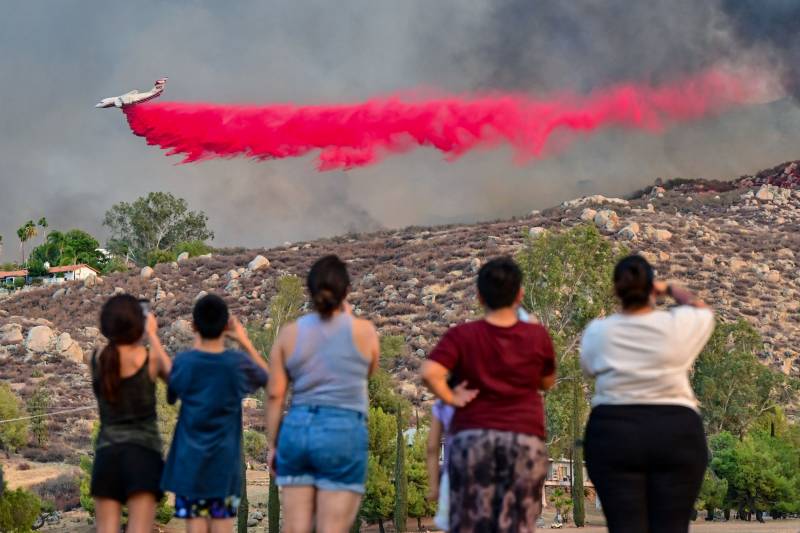With record demand on power supplies across the West, California snapped its energy use record around 5 p.m. Tuesday with 52,061 megawatts, far above the previous high of 50,270 megawatts set July 24, 2006.
An emergency appeal for conservation that was sent to Californians’ cellphones was credited with an immediate drop in demand on the electrical grid that evening.
Electrical demand hit 50,184 megawatts on Wednesday, but it ended up being “a relatively quiet operation on the system,” Mainzer told a briefing.
The electrical load forecast for Thursday afternoon and evening was higher, however, and the uncertainty involving the renewable energy sources made the situation a bit more complex, he said.
“We certainly think we’re close to turning the corner, but we still have challenges ahead of us this evening,” Mainzer said.
Storm and wind conditions associated with the approaching hurricane were likely to create a new set of risks for power shortages in Southern California, he noted.
Hurricane Kay was expected to be downgraded to a tropical storm before it reaches northern Baja California on Friday, the National Weather Service said.
Despite losing hurricane strength, Kay was expected to send a surge of moisture into Southern California. Strong winds, heavy rain and flash floods were likely Friday evening through Saturday. Tropical storm warnings were posted for mariners.
Up the West Coast, forecasters predicted strong, gusting winds and low humidity across western Oregon beginning Friday, and authorities warned of heightened wildfire danger after an unseasonably hot and dry late summer.
At least two power utilities issued potential shutoff notices to more than 40,000 customers to the south and west of Portland, Oregon, because of winds that could reach 50 mph.
Forecasters warned of a chance of “rapid fire spread” but said winds were not expected to be as intense as those that hit on Labor Day weekend in 2020, fanning wildfires that burned more than 1 million acres, destroyed 4,000 homes and killed at least 11 people.
Associated Press writer Gillian Flaccus in Portland, Oregon, and Scott Sonner in Reno, Nevada, contributed to this report.
